Medellín, Colombia, was never on our radar of places to visit. As it has been for most…until now. When thinking of exotic places to travel to, the coastal villages of Colombia might have crossed your mind. Places such as Barranquilla or Cartagena. But a city in the middle of Colombia that’s not Bogotá? We get it. When we heard some of the first rumblings of this city being a great place for digital nomads, we didn’t even know how to spell it. Medagin?
🤣 FUN FACT: Many English-first speakers also mistakenly spell Colombia as Columbia, subbing a “u” for the “o” that it should be.
🔥 PRO TIP: How to say Medellín. Contrary to what you might think – Medellín is pronounced with a soft j sound – medejin – not with the ya sound that typically comes with the double ll’s in Spanish. And speaking of language, Spanish is spoken here, more than you might think. You’ll be ok if you don’t speak Spanish (with all the translator apps that are available), but you’ll have a greater understanding of how the city and the people work if you have a tiny bit of Spanish under your belt. But, if nothing else, at least you’ve got the Medellin pronunciation down.
Traveling around the U.S. in our RV, RAIF, for the last five years has been an adventure to say the least. But with almost 200 countries on this planet (How many breweries does that make?) why should we stick to just one? Before we embarked upon our RV life and craft beer guides, we took family vacations to Italy, Greece, Turkey, Scotland, Ireland, England, and Mexico. Ken’s been to China. I’ve been to Chile and Kenya. We’ve both been to Singapore and Thailand. We have plans to head to Europe again soon for an extensive brewery tour, but where to in the meantime?
Why Medellín, Colombia?
After listening to countless hours of varying podcasts and reading countless articles, all while sifting through social media groups – all about some of the best places for digital nomads to work and play, Medellín, a city in Colombia at the northern tip of South America, was consistently at the top of many lists as one of the best places for digital nomads. Its ease of transportation, its location in the Andes Mountains, its vibrant culture, and its affordability both while there and getting there make it easy to see why. Plus, we wanted to explore the Medellin craft beer scene.
Maybe the better question is, “Why not, Medellín?” So we went. No we didn’t drive the RV. We parked RAIF, caught a flight, and transformed our U.S. travels into the first of many overseas ones.

Intro to Medellín – Table of Contents
And we are sharing our finds with you, so when you take the leap, you’ll at least know where to find the beer to go with the adventures. Welcome to the first in our series all about Medellín. In this first post, you’ll find an overarching guide on Medellín. For easy access to what you need, click on the Table of Contents below. If you want to know more about all of it, just keep on reading. If you can’t find what you need, it might just be in a future post, as we are in the process of writing travel guides for Medellín. However, if you need an answer now, email us or comment below. We’ll happily tell you what we know.
- Brief History of Medellin
- Traveling to Medellín
- Do I Need a Visa to Enter Medellin?
- What to Expect at the Medellín Airport
- What Language is Spoken in Medellín?
- Where to Stay in Medellín
- Is Medellín Safe?
- Can I Drink the Water in Medellín?
- Getting Around in Medellín
- What’s the Weather Like in Medellín?
Brief History of Medellin
Founded in 1616 by Francisco Herrera Campuzano, Medellín began as a small village in Colombia. After establishing independence from Spain in the 1800’s, Medellín found itself a quickly-growing city. In its central Colombian placement, the city was a transportation hub between Bogotá and the Caribbean Sea. This became especially prominent as Medellín’s surrounding area established itself as a massive coffee export and as one of the main coffee producing regions of Colombia.
But Medellín hasn’t always been a sought after location. In the 1970’s and 80’s it was a base for cocaine cartels operating in Colombia. Because of this, Medellín quickly became a city known for its violence and crime. The people of Colombia were trapped inside of this violence and had to fear all sides of it from the cartels themselves to the government who was failing to enforce a culture in which the safety of its people was valued.
In the 1990s the government made a greater push to suppress the violence that Medellín’s communities were facing and made a great amount of progress, shifting the menacing culture to a place that is now sought after by Colombians as well as expats, digital nomads, and tourists.
Today, the city and its surrounding neighborhoods are now home to around four million people and welcome in over a million travelers annually.
PRO TIP: Medellín, Colombia’s past is exactly that – a thing of the past. Pablo Escobar is not a hero. He is a villain, and the locals here don’t want to hear all about Pablo Escobar or the cartel. There’s so much more to this thriving metropolis, so celebrate the art, the food, the drink, the culture, and the people that call this beautiful city home.

Traveling to Medellín
With us being two of those million. We knew we were going to be hitting the skies more than the roads soon, so we began our planning long before we even knew where we were flying to. This planning involved looking for a credit card that was geared towards travel. We needed a card that would give us bonus airline points just for signing up. Since we didn’t know exactly where we were going or what airlines we would be flying, we opted for a non airline credit card, choosing Chase Sapphire instead. This card had one of the best bonus sign up points available, with requirements that we could meet.
Credit card in hand, location chosen, now, what airline? We are no frills people when it comes to camping, and the same goes when it comes to flying. And Spirit Airlines is a no frills airline. Grabbing two round trip tickets for $900 total (you could go cheaper, too – we waited too long to decide), we were set.
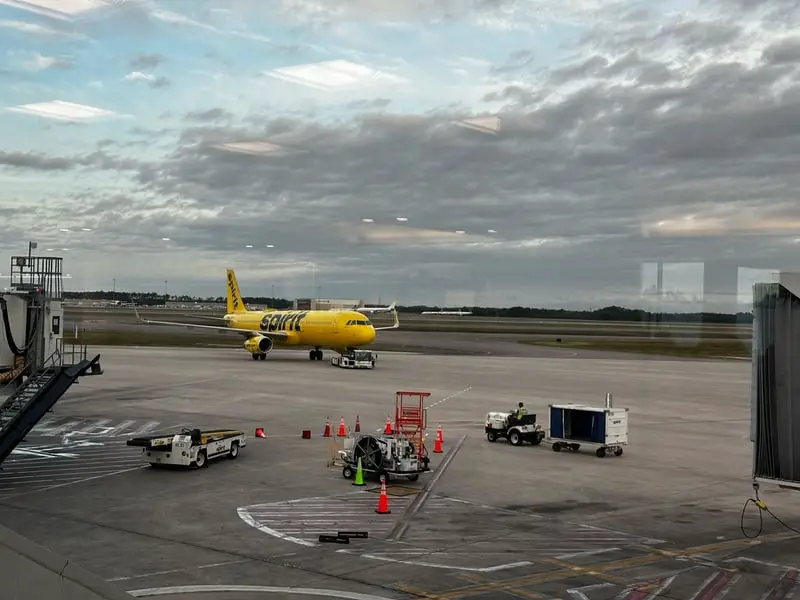
And by no frills we mean it. When booking with Spirit at their lowest basic fare, all you get is a seat, an unassigned seat that is. And for us, we’ll take the lowest price airline, because we don’t check bags or bring a typical carryon. Yes, we bring luggage, but that luggage is a backpack that fits under the seat – no charge for that. In reality, all we really only need are a few items: computers, basic necessities, two or three interchangeable outfits, and two pairs of shoes (one pair on our feet).
PRO TIP: Shop our Amazon store for travel gear and more. As an Amazon Associate we earn from qualifying purchases.
We also let Spirit choose our seats. The majority of the time, we still end up sitting together. And if we don’t, we’ll see each other when we land. We’ve been traveling like this for years and it works for us. No frills needed. Just get us to the destination where, if we want, we will find the frills once we’ve landed.
Do I Need a Visa to Enter Medellin?
There’s nothing special needed to fly to Medellín. You just need a passport. No visa ahead of time. No medicine or additional vaccines. However, if you plan on heading into the jungles of Colombia or further into any undeveloped areas, there may be other requirements. Be sure to have an idea of where you’re heading. If you’re only going to Medellín or Bogotá or any local excursions such as coffee farms or mountain biking, nothing else is needed.
What you will need though is proof of your flight out of Medellín. As a tourist you can only stay legally for 90 days, and the government wants to make sure you have a return flight home before they let you in. If you do plan on staying longer, you can. You’ll need to either apply for an extension or get a visa, and this can be done online or by visiting any Colombian consulate in your home country.
What to Expect at the Medellín Airport
Upon landing in Medellín’s Jose Maria Cordova International Airport, you’ll notice that it’s just like any other airport. Signs for baggage claim, signs for gates, signs for everything. And people focused on getting from one place to another. You’ll hear English, but the majority of the language spoken here and in the rest of Colombia is Spanish. And no matter how much you might think Colombia is just like Mexico, it’s not. So some of the Spanish is different here than in Mexico. But more on the language in a follow-up post to be be published soon.
Attempt to Speak Spanish
For now, just know that your attempt at speaking Spanish is better than not trying at all. So broken Spanish and all (which is what we have to offer…for now) or only English, you’ll still be able to maneuver your way through the airport. But really, with Duolingo (which is what we use every night to practice) so easily accessible, you should at least be able to say, “Con mucho gusto.” This means with much pleasure and is how the people in Medellín say, “You’re welcome.”
Using the Colombian Peso and Finding a Taxi
Since we only had our backpacks and no luggage to collect, we headed towards the airport exit keeping our eyes open for money exchange and public transportation options along the way. Colombia uses the Colombian Peso (COP), which roughly translates to one U.S. dollar equaling around 4,100 COP. Although you can get cash from ATMs at most banks throughout the city, we wanted to make sure we had cash right away, so we found a money exchange at the airport to get us started.
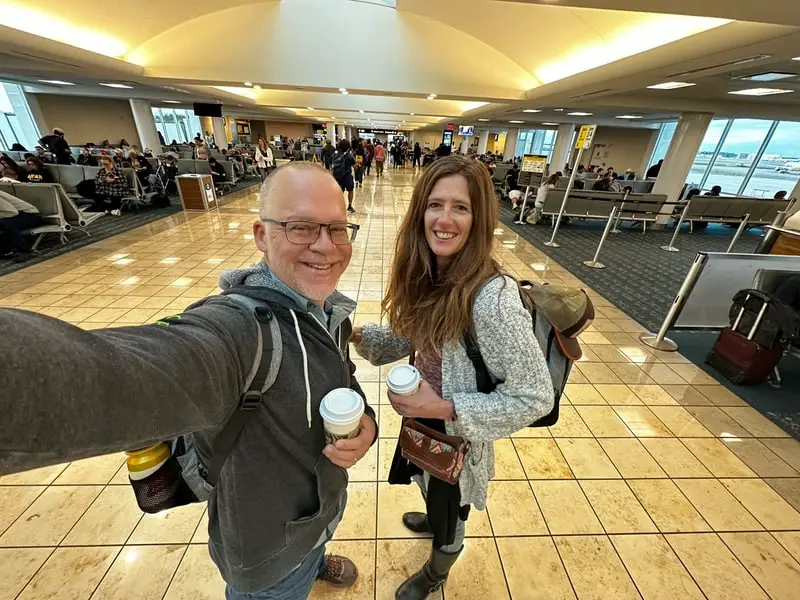
Since this was our first foray into Medellín, we wanted to get to our apartment and get settled without the hassle of trying to figure out the public transportation system on our first day. Which in Medellín, is actually quite easy.
Regardless, we settled on a taxi. Just like almost any airport across the globe, taxis are readily available. But unlike most taxi rides from an airport, taxis here are relatively inexpensive. Depending on where you’re headed – most places where travelers will be staying are around 40 minutes form the airport – a taxi will run you around $15-20 U.S. dollars (about 75,000 COP).
We chose another taxi option – a shared taxi. But you really do need to be able to speak the language a bit better than we did to understand the stops for these shared taxis. We did hop in a shared taxi – cheaper at around five to 10 U.S. dollars (33,000 COP) – thinking that it would take us to Laureles, the neighborhood we stayed in. Our driver did get us there, but only after we had to pay around another five U.S. dollars because the shared taxis from the airport only go to specific places. Which we did not know, and now you know.
Overall, from the airport to your hotel, hostel, Airbnb, or whatever, we recommend taking a taxi. It’s easy and convenient and the rates are reasonable.
PRO TIP: Grab a taxi from the airport – it’s inexpensive in comparison to U.S. taxi prices and they’ll get you exactly where you need to go without added stops like a bus or metro. There’s no easy way to use the metro from the airport, as it takes a taxi ride to get to the station.
Where to Stay in Medellín
In small towns determining where to stay is often very simple. But when you’re visiting a city of around four million people, that task can quickly become overwhelming and difficult. Especially if you don’t know the city. First, as with any large city, safety is a concern. Second, as with any large city, transportation is a concern. Third, as with anywhere, you’ll want to be in a place where you are comfortable, or at least can tolerate the space while you are there.
When we were looking into the best places to stay, there were many options, but too many options become overwhelming. So we narrowed down our choices to four of what we considered the best neighborhoods in Medellin: El Poblado, Laureles, Envigado and Sabaneta, and El Centro.
Medellín Neighbordhoods Map
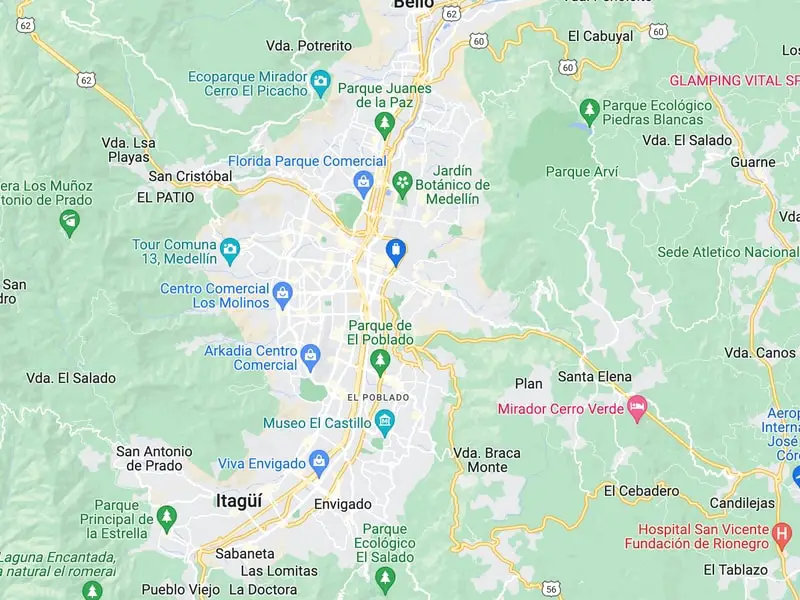
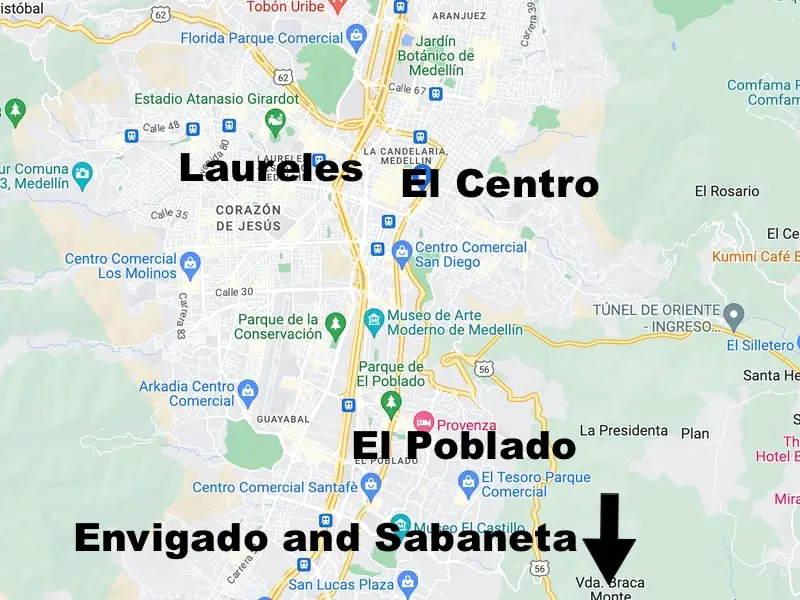
El Poblado
El Poblado (including the nearby neighborhoods of Provenza, Parque Lleras, and Patio Bonito) is one of the most well-known and sought after places to stay when visiting Medellín for several reasons. It is an upscale area of the city with many restaurants, bars, nightclubs, hostels, hotels, and even co-working spaces. Breweries in this area are also easily accessible. English is widely spoken here, and you’ll come across many travelers and digital nomads. But, minus the easy accessibility to several breweries, those are also the same reasons why we chose not to stay in El Poblado – too touristy for us.
We did visit, though, a few times. This is the place to people watch, to eat, drink, and be merry! Merry we were indeed. (More details on all there is to do in Medellín coming soon.)
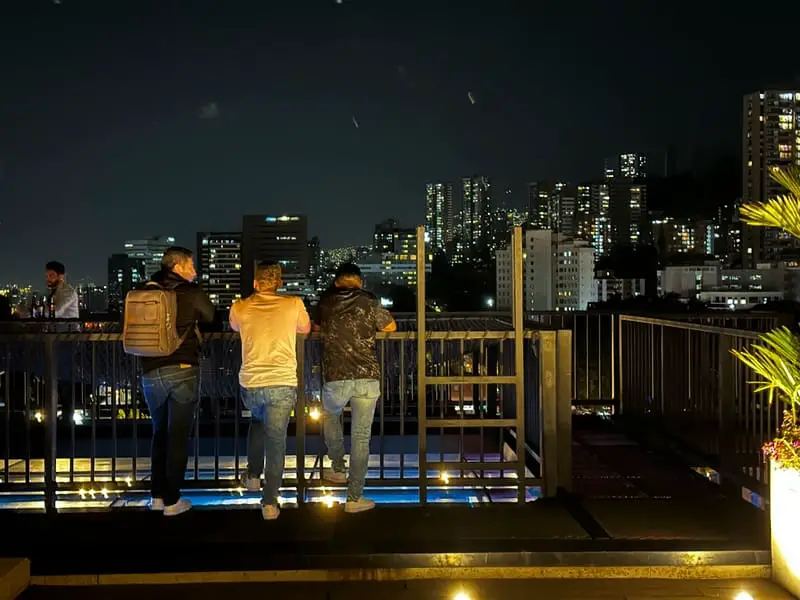
Laureles
Laureles, on the other hand, has a lot of the above, including restaurants, bars, and nightclubs, with the majority of them located on La 70 (a bustling Vegas-like street). You’ll even find the occasional tourist and digital nomad here, as there are a few hostels and co-working spaces, too. And while there are no official breweries in Laureles, there are beer bars, many with a decent selection of local beers on tap. (Medellín craft beer guide coming soon.)
What you will also find in Laureles are local people and ex-pats living their everyday life. Spanish is widely spoken in this working class neighborhood, and you can feel as though you are a part of the community here, and not just another tourist. Fruit vendors stroll the streets hawking their wares. Panaderías (bakeries) seem to be on every street corner, along with empanada cafes and food carts. You’ll find local markets, grand supermarkets, malls, and coffee shops. But you’ll also find neighborhood parks, Universidad Pontificia Bolivariana, and the soccer stadium, Estadio Atanasio Girardot.
This is where we “lived” for a month. In a third story Airbnb apartment above a mattress store and pharmacy, overlooking another mattress store (there’s an unusual amount of mattress stores in Medellín, it seems), a tire store, and a neighborhood bar that never seemed to close. We loved it.
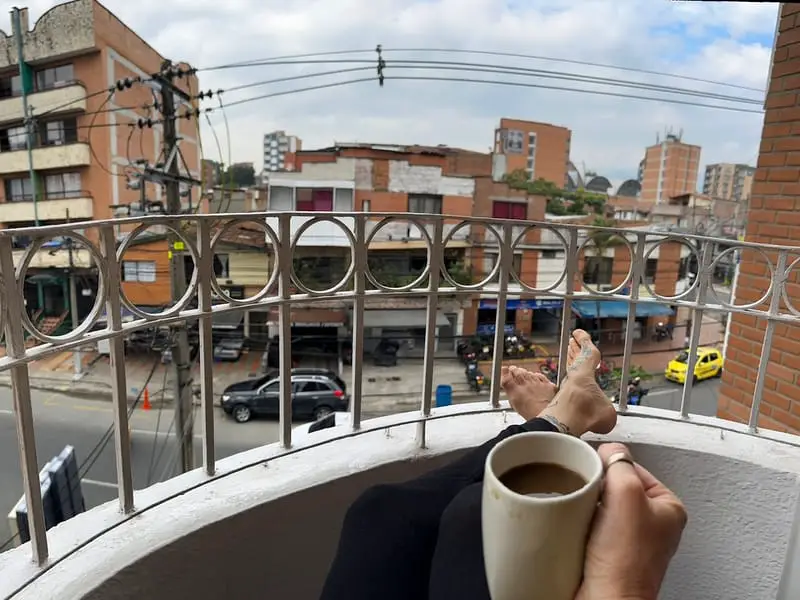
Envigado and Sabaneta
If you’re looking for that local neighborhood like Laureles but without all the urban excitement of mattress and tire stores and the lights of La 70, then you might want to consider Envigado or Sabaneta. Think of these two places like the suburbs of a major metropolitan city. You’ll find restaurants, a few breweries, and some nightlife, but what you’ll really find are quiet neighborhoods with traditional homes and not many tourists.
You won’t hear much English here, either, making it the perfect place to practice your Spanish if you want to talk with locals. Many people who come to visit Medellín for the first time stay in El Poblado, but when they come back, the tranquility of Envigado and Sabaneta holds their hearts.

El Centro/La Candelaria
El Centro (downtown Medellín) is full of architectural wonders, art, museums, historical sites, and outdoor vendors. There’s a lot going on here at all times – from street festivals to outdoor shopping malls to passers-by always attempting to sell you something. This is the hub of the city with the metro seeming to be the center point and people in a hurry to get somewhere – anywhere.
But in the midst of all the chaos, there’s a calm to be felt if you can resist the must-get-somewhere-mindset and just find a place to watch the action. There are hotels and restaurants and all the things you might deem necessary to spend a few days in the city, but most people who visit Medellín do not stay in El Centro. This is a place to visit during the day – and leave before nightfall. We’ve heard from locals and tourists alike to avoid El Centro at night due to the amount of robberies and pickpocketing that often occur here.
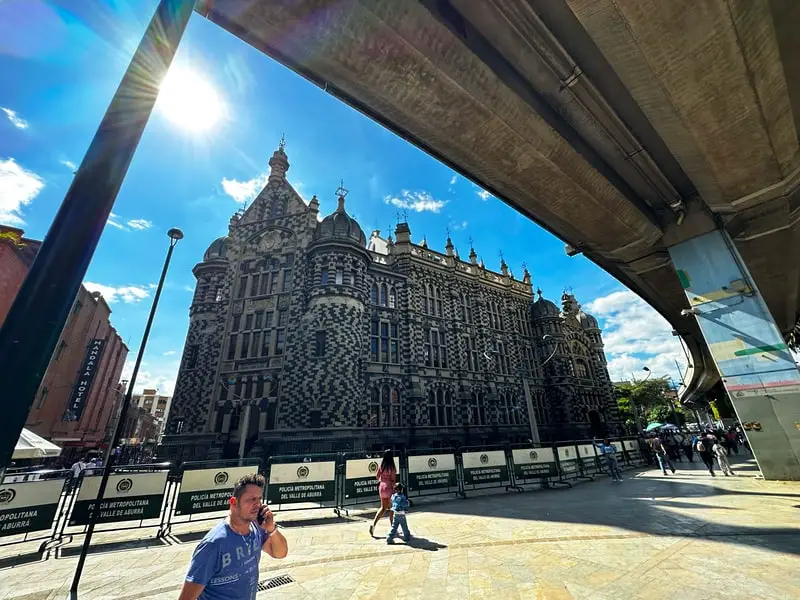
That’s a reminder that yes, there’s a lot of beauty throughout all of Medellín. Luxuries to behold, fine dining, urban parks full of lush greenery, the overall kindness of the people here. But there’s also hardship and desperation as evidenced by homelessness, pick-pocketing, and begging. In some areas, especially the likes of El Poblado and other tourist zones, it’s not rare to see a mom in ragged clothes holding her infant while shoeless kids ask for change. We mention this, not to discourage you from visiting this vibrant city, but to ensure awareness of the reality of a place – not a tourist’s view, but the real view.
Being a tourist, it’s easy to forget that, like any community, there are problems behind the glitter. And we as guests, don’t need to add to those problems. Be kind. Be patient. Be understanding. Be real.
Is Medellín Safe?
And maybe that’s why, when we were researching Medellín, one word was constantly mentioned again and again. Too much, in my opinion. That word? Safety.
Back in my teaching days, I took my students out on camping trips into the mountains in Colorado. One of the parents wouldn’t let her child go because I couldn’t guarantee her safety while camping. I couldn’t guarantee her safety on the playground, either, but she showed up to school every day. Taking steps to be safe whether going to school, heading out into the wilderness, or exploring a new city in a foreign country, is something that should be done.
But if we focus too much on safety and talk it about it constantly, it might just make you crawl into your bed, blanket wrapped tightly around you, head under your pillow, never to embark upon the world again. It might make you change your mind about something you were previously so excited about. If you let the world get to you, you’ll never get to the world.
So, by all means take the necessary steps to be safe in the environment that you are in. Be aware of your surroundings and trust your instincts. But then let it go. Because if you can’t stop checking that your tiny travel purse is still snugly attached to you because you’re constantly worrying about the guy down the street. The one pushing something strange in your direction. Because you’re so focused on safety, you might miss the simple fact that the guy with the strange something is actually a vendor selling the biggest, ripest, avocados you’ve ever seen in your life. Your dream avocado just passed you by because you only had eyes for your purse.
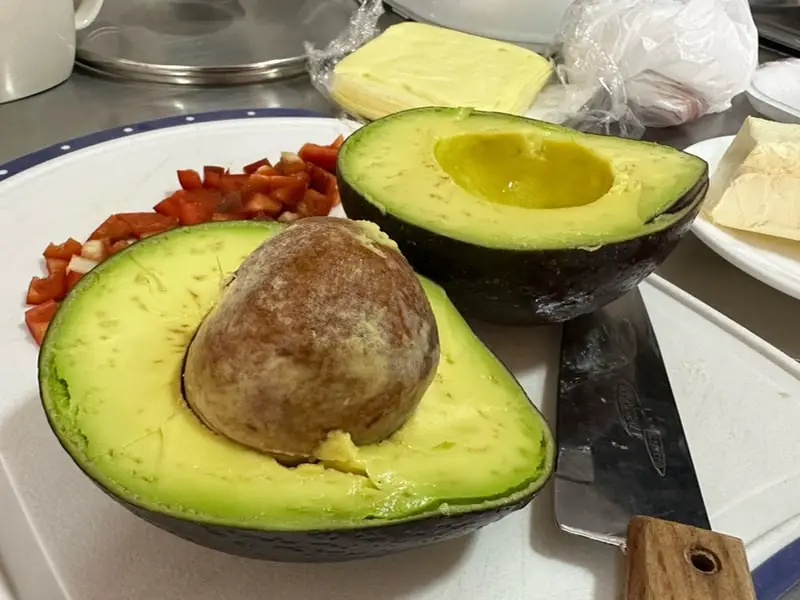
If you let the world get to you, you’ll never get to the world.
Safety Tips for Exploring Medellín
Yes, Medellín has a violent past. Yes, Medellín is a huge city. Yes, Medellín has some questionable people. Yes, you should be aware of who and what is going on around you. You should consider a wallet that fits in your front pocket. Your phone should also be in your front pocket. If you carry a purse, make it compact and keep it close to your body. If you’re carrying a backpack, consider carrying it in the front. Don’t be wandering with your phone out in front of you. If you’re on your phone, be aware of who and what is around you. Don’t walk down dark alleys. Walk with people you trust. Don’t flash cash or other flashy things. Use common sense.
Be Safe in Medellín, But Get Out There
If you listen to all the advice out there on staying safe in Medellín, it sounds like you shouldn’t even be outside at all at night. But Medellin has a thriving nightlife, and to not experience it while there would be a shame. Just don’t be the person who is drunk off their ass – yes, enjoy the beers, but not to the point where you can barely stand and your words are slurring – and stumbles out of the bar at 2:00 in the morning on a dark street. Robberies can happen anywhere at anytime, but this particular scenario is almost like an open invitation. If you do get robbed, it’s not your fault (unless you robbed yourself), but many times getting robbed or pickpocketed can be prevented.
We walked almost everywhere – during the day and at night. Just be aware and keep to well-lit areas, whenever you can. And if a taxi feels more like the right thing to do to keep you safe, then get a taxi. The main point is this. Be safe, heed the warnings, but don’t let said warnings stop you from experiencing Medellín or any other place for that matter. Could you be pickpocketed or worse? Yes, but could you also head out into the day sight seeing, buying fresh fruit from street vendors, while biting into a freshly made empanada, sipping on Colombian coffee, with nothing bad happening to you at all? That’s the more likely scenario.
Get your head out from under your pillow, unwrap yourself from your burrito blanket, and get your ass out of your comfy bed. The world awaits.

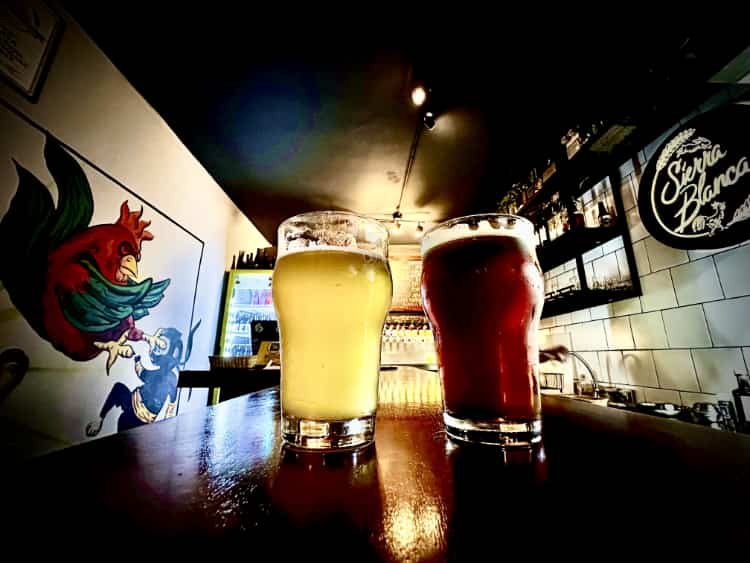
CRAFT BEER IN MEDELLÍN
Taking your own trip to Medellín and need to know where all the beer is? After our trip, we compiled everything you need to know about finding craft beer in Medellín.
Wether you need a brewery, beer bar, or something to bring back home, wherever that may be, we’ve got you covered!
Can I Drink the Water in Medellín?
Before we are done talking about safety, we have to mention the safety of the water because no matter how much we prefer beer over water, we do need to hydrate before the beer. And hydrating in Medellín is quite simple. Turn on the tap.
It’s true. You’re warned not to drink the water in many Latin American and South American countries. But in Medellín, this is not true. So ditch the plastic water bottles, and fill up your glass with quality water straight from the tap because Medellin is one of the few places in Colombia where you don’t have to buy water from a bottle.
Getting Around in Medellín
You made it to Medellín. You’re hydrated. You’re situated in your home away from home. It’s time to get out there. It’s time to find the breweries. But how do you get to where you want to go? Oh, there are so many ways.
Walking in Medellín
A taxi doesn’t need to be, nor should it be, your only option for getting around this big beautiful city. Staying in Laureles, just a few blocks off the infamous La 70 – a Vegas like local street full of nightclubs, bars, restaurants, and food stands – almost everything we needed (and didn’t need) was within walking distance for us. Including locally owned markets, chain supermarkets, restaurants, coffee bars, panaderías, and more even away from La 70. We walked everywhere.
And when we took a taxi to other neighborhoods, once we got there, we did the same. Walked everywhere. For us, walking is both exercise, and a great way to experience a new place. When walking, you catch more of the local vibe. You’re able to just meander into a place that you happened to be walking by. We found wonderful street food, breweries we weren’t expecting to find, chances at attempting conversations in Spanish, street art, and more. Granted, some of our walking forays took us into some not so desirable places. It was easy enough to turn around, though, and walk somewhere else.
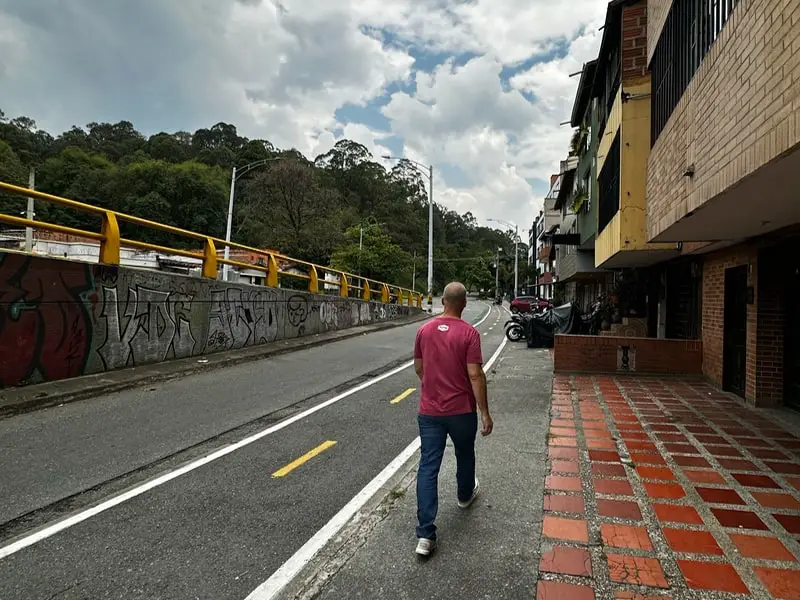
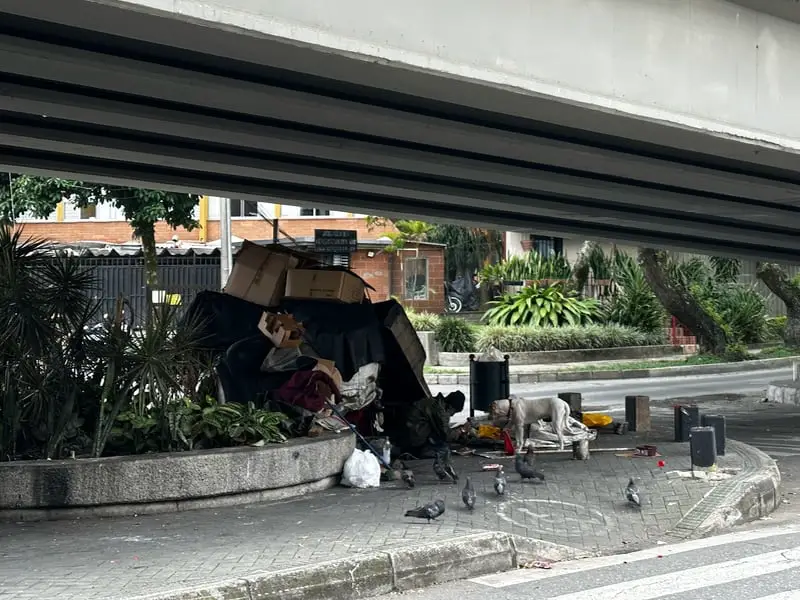
PRO TIP: Pedestrians do NOT have the right away on the majority of the streets in Colombia. And traffic signs and signals for drivers seem to be more of a recommendation rather than a requirement. Sidewalks also have random holes that seem to appear out of nowhere. Having eyes in the back of your head as well as on the ground as well as peripheral vision to be aware of your surroundings is necessary. Walking is great, but if not using some caution, it could be dangerous to your ankles and other random body parts.
Taxis in Medellín
But when it was time to head further than our neighborhood, or it was late at night and time to head home, we hailed a taxi. Well, we scheduled a taxi. With Cabify, an app popular in Spain, Mexico, and other Latin American and South American countries, long gone are the days of waiting on a corner and waving down a taxi.
You still can, but why when all you need to do is grab your phone, schedule your pickup and drop off, and pay and tip your driver. All from the comforts of your phone. And in Medellín, taxi rates are very reasonable. One of our most common routes was from Laureles to El Poblado – depending on traffic – a 20 minute ride away. This generally cost us around $4 U.S. dollars before tip.
Easy, convenient, and inexpensive, taxis, after walking, were our main mode of transportation, even when we went galavanting outside of the city in search of breweries.
NOTE: In addition to scheduling a taxi, Cabify also allows you to schedule a Cabify driver, which is similar to Uber or Lyft’s rideshare services. The prices, to us, were so similar between a Cabify driver and a taxi that we stuck with the taxis most of the time.
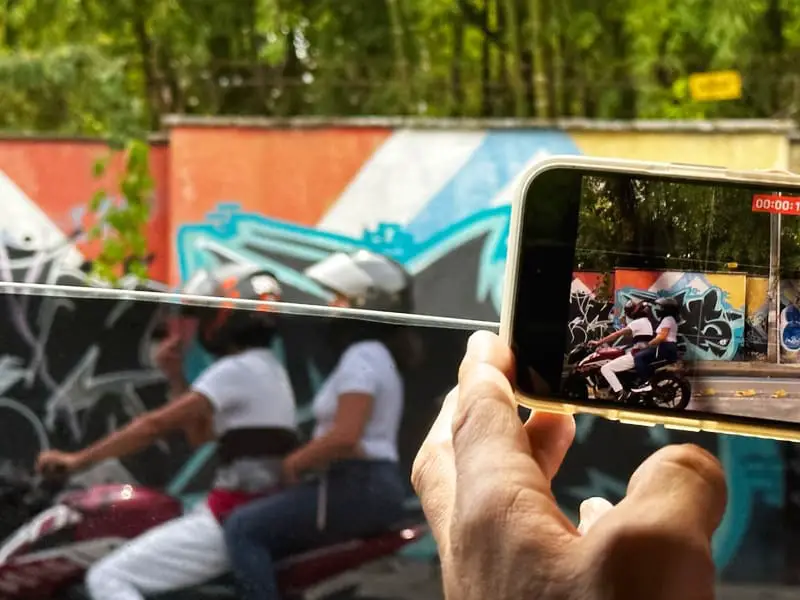
Is there Uber in Medellín?
You can use Uber in Medellín, too, but Uber may or may not be technically illegal. Whether or not it is, people use Uber all the time. Similar to riding in a taxi, there is one main difference. Your driver might ask you to sit up front, so it doesn’t look like they’re an Uber driver. With Cabify, the taxis worked just like Uber or Lyft for us, so we never used an actual Uber driver.
Medellín’s Metro and Cable Car System
Medellín’s public transit system is one of its greatest features today as it built a bridge between the slum like outer-edges of the city to the wealthier parts within its valley. The simple physical accessibilities of added on cable cars and escalators to the already bustling metro and bus system created a more unified city where access to resources and opportunities were no longer quite so limited.
These public transportation options not only assist the millions of people that utilize Medellín’s public transportation system, but also the tourists that explore the city every day.
Medellín’s metro system generally runs north and south, with Niquia being the northernmost stop and La Estrella being the southernmost stop. There are two basic cable car routes, one heading up the mountains to the west and the other to the east. These cable cars were built for easier access to the neighborhoods housed on the steep sides of the mountains that surround all of Medellín. However, they are also now one of Medellín’s most popular tourist attractions. There really is no other way to get a view of the splendor and the realities of this lively city.
Medellin Metro Map (as of 2023)

Medellin Metro Pricing
Whether you’re utilizing the metro and cable cars for transportation or to experience the city as it whizzes by you, or to get that birds-eye view as though you were perched in the clouds, the price is right. For around 3,000 COP – less than $1 U.S. dollar – you’ll get a one-way ride anywhere along the line, including the cable cars as long as you don’t leave the station. (There is an added fee to take the cable car to Parque Arvi, a national park.)
Even if you don’t choose the metro or the cable cars for your main mode of transportation, we highly recommend taking the metro and the cable car at least once. It offers a different perspective of the city and can also give you a sense of the people as they go about their day to day lives. It gets you out of the tourist bubble, even if only for a moment.
As for the cable car – this is a must. The views as you ascend from the valley floor to the mountains above and back again will leave you with a sense of both awe and bewilderment. At least it did for us as we pondered the wide gap of economic classes within one city.
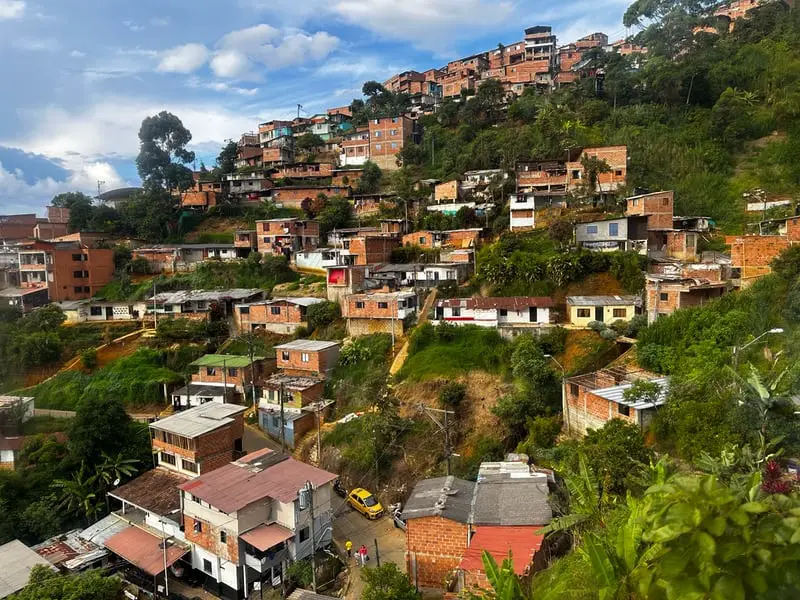
PRO TIP: Ride the metro and cable cars at least once. It’s easy to navigate and inexpensive. When purchasing tickets for the metro, you won’t actually get a ticket. You’ll get a Civica card. This card is reloadable either with a ticket agent or at ticket booths located in the stations. If you know you’re going to ride public transportation a lot, you can add more money to your card. If not so much, add less money. The card covers cable cars, the metro, and buses. If you purchase your card at the Itagüí, Niquía, San Antonio or San Javier metro stations during business hours, the 5,000 COP charge is waived and you’ll also receive discounted fares. For the full details and a complete listing of all the places you can recharge your card, click here.
Biking in Medellín
For as much as we love mountain biking, we were a bit hesitant to ride bikes within the city limits of Medellín due to the insanity of the traffic rules (or lack thereof) that encompassed the major parts of this huge city. But just because we were hesitant, ultimately deciding not to ride the public bikes here, doesn’t mean you have to make that same decision.
Many parts of the city, especially in Laureles along La 70 and its suburban neighborhoods, have bike lanes. And they are used quite often. These bike lanes are often right alongside the sidewalks as well as the street. As a pedestrian, be aware of the bikes as much as you are the cars. Again, pedestrians do NOT have the right of way. Nor do bikes when it comes to cars.
But this mere fact of insane traffic and crazy drivers, combined with all the motorcycles and scooters that zip in and out of every inch of free space on the road does not stop the many bicyclists. We even witnessed many costumed evening rides, including bikers, scooter riders, and roller-bladers cruising down the middle of the street, music blasting, all smiling. The traffic may be intense, and the drivers may be crazy, but the stress and anger that are usually paired with traffic, seems to be less in Medellín, as compared to many large U.S. cities.
PRO TIP: Encicla, Medellín’s FREE city bike system, permits you to borrow bikes from stations throughout Medellín and the surrounding area. It works off of the Civica card that you use for the metro and other public transportation options. Click here for all of the details on using Encicla.
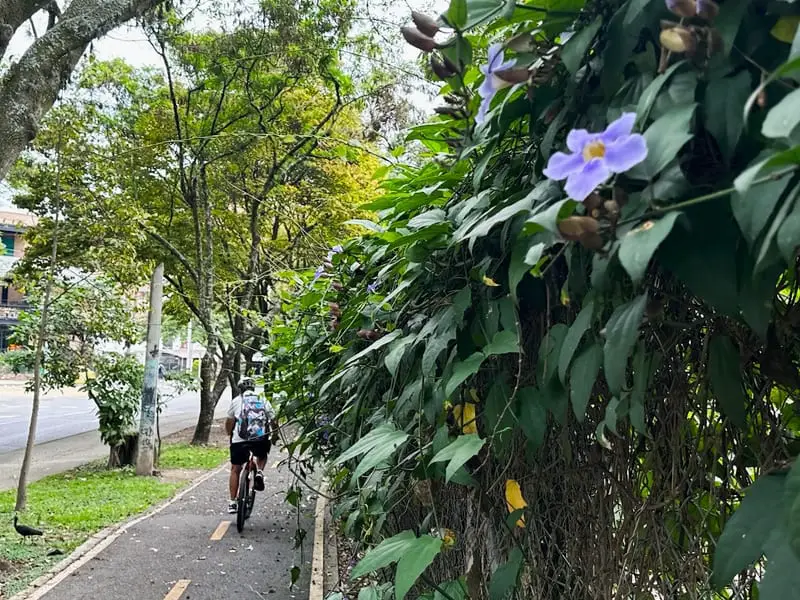
Transportation Apps
There are many apps out there to make getting around Medellín easier than ever. We’ve listed a few of those apps for you right here. These aren’t our recommendations, just a list to make it easier for you to decide what you may need when you visit the City of Eternal Spring.
- Cabify – similar to Uber and Lyft – we do recommend this app
- Uber – access to drivers across the city
- Moovit – find the fastest and most convenient combination of Medellin’s buses, trams, metro, or public bikes
- Metro de Medellín – metro app for easy access to the metro
PRO TIP: We are long time Apple users, meaning we use Apple Maps. However, in Medellín – we hate to say this – Google Maps works much better. Use Google Maps to get around Medellín.
What’s the Weather Like in Medellín?
And that brings us to the common small talk topic of weather. If you look at any weather app for Medellín’s forecast, you might not want to go. It almost always says cloudy with a chance of rain. But there’s a catch to that forecast. It’s deceiving.
Yes, it might rain every day. Yes, it might be cloudy every day. But it will also more than likely be around 75-88 degrees Fahrenheit every day. And that daily rain and those daily clouds? Well, if they are daily, they are usually short-lived. The clouds will part and the sunshine will prevail. Almost every single day.
Medellín is called The City of Eternal Spring for good reason. The spring-like weather dominates its weather forecast all year long. Even the lows are spring-like. January, March, July, September, or any month at all, the lows average anywhere from the high 50s to the low 60s.
Yet another reason to love this Colombian city.
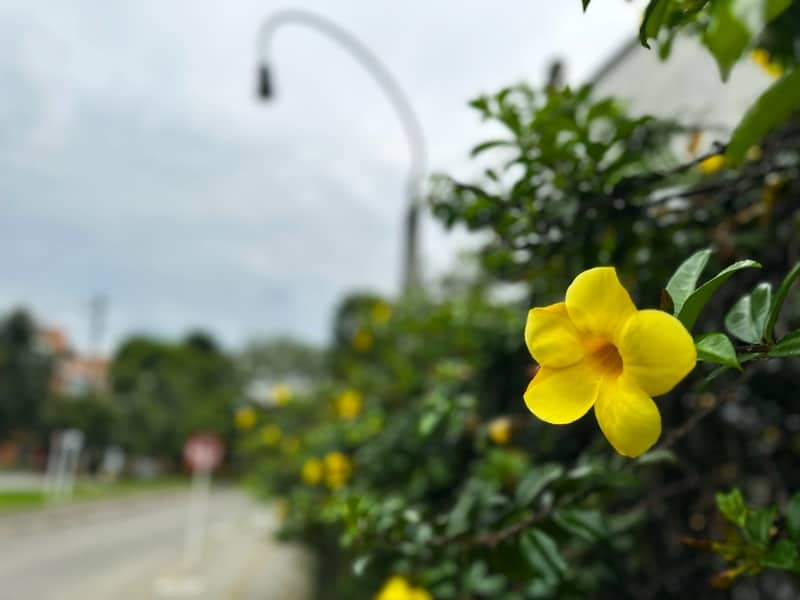
Why Medellín? Why Not?
Medellin has received international attention for the violence that occurred within its borders. Because of this, the vibrant culture and historical attributes that are at its core were somewhat neglected. However, through the decades, Medellín has blossomed into a unified hub of art, food, culture, and inclusivity. Today Medellin provides a place for diverse people and continued growth and is a thriving city filled with beautiful experiences and even more beautiful people.
So, the more appropriate question to ask when it’s time to consider where in the world you might go is – Why not, Medellín?
Now that you know how to get to Medellín and how to get around, stay tuned, because we’ve got the guides to Medellín’s breweries and beer scene, along with guides to food, art, places to go, and more heading your way. Including an excursion to Salento, where we toured a coffee farm, visited the world’s tallest palm trees, and went mountain biking!
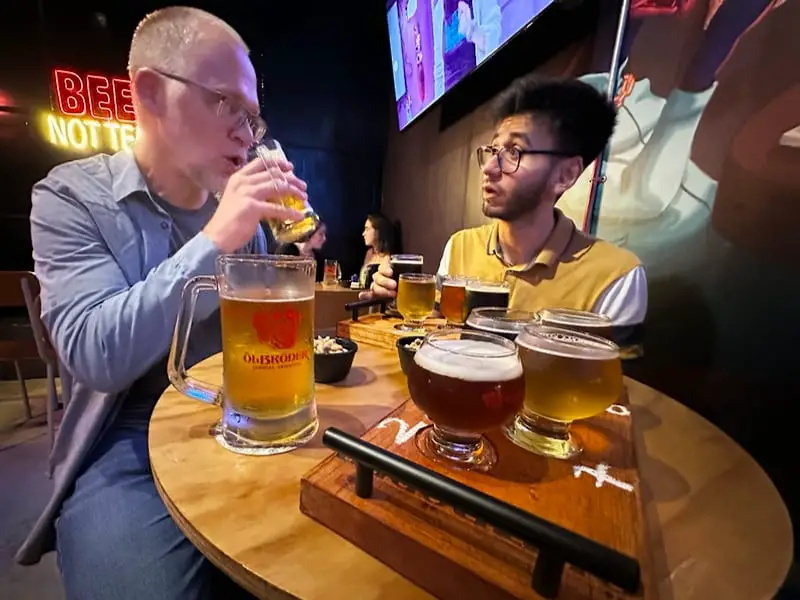
PRO TIP: Sign up below for our newsletter, so you’ll be among the first to know when our Medellín guides are posted.

Excellent article! Exactly things I wanted to know.